#spikenards
Explore tagged Tumblr posts
Photo
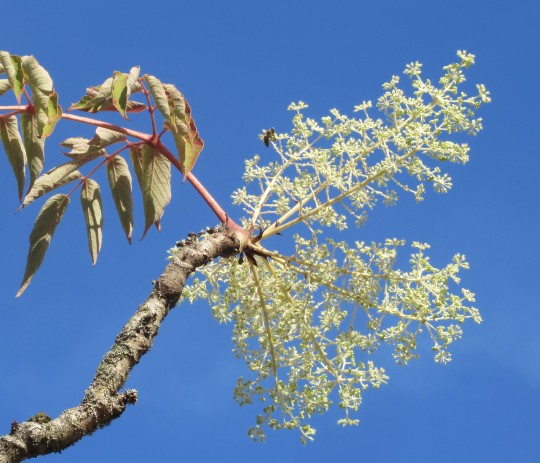
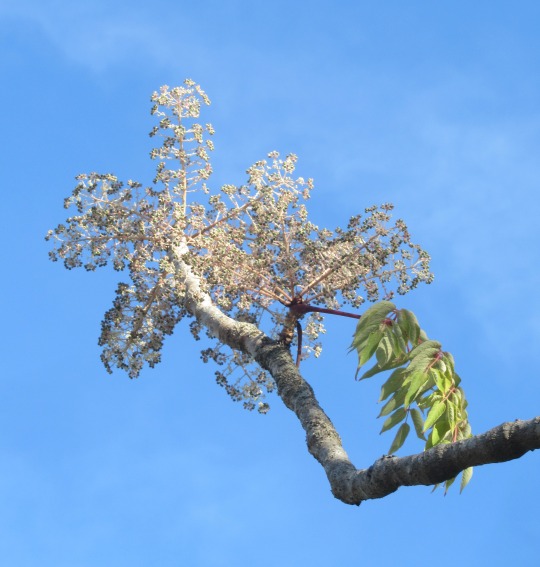
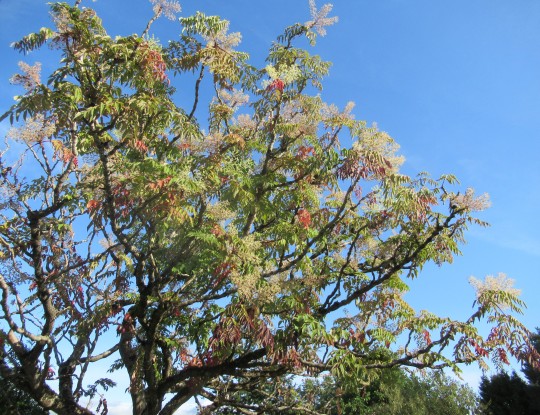
Aralia spinosa (devil’s walking stick)
The Aralia family (the spikenards) is a diverse group of about 65 species, native to Asia and North America. Some members of the group are only a foot tall (30cm) but others grow up to 65 feet. Aralia spinosa is about half way up the ladder and this mature specimen is maybe 25 feet tall. It’s withered leaves are showing the effects of last summer’s drought.
#flowers#photographers on tumblr#spikenard#spot the bee#trees#fleurs#flores#fiori#bloemen#blumen#Vancouver
77 notes
·
View notes
Text
"Oh," Adam said, instead. "It's late."
#ronan lynch#adam parrish#pynch#side: richard gansey#side: bluesey#side: noah czerny#rated: m#length: single chapter#length: 5k-10k#genre: fluff#genre: angst#pining#bed sharing#author: spikenard
8 notes
·
View notes
Text
Today's Haiku with Picture 905

The udo tree
Is a pretty impressive grove
But it's a grass
spikenard, Aralia cordata : Japanese vegetable.
ウドの木の
それなり立派
木立ぶり
実際は草。
(2023.07.19)
3 notes
·
View notes
Text
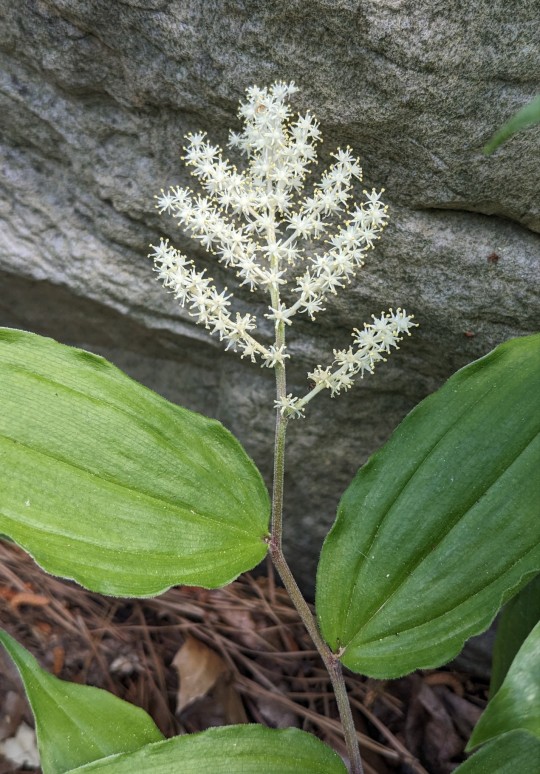
Maianthemum racemosum / False Solomon's Seal at the Sarah P. Duke Gardens at Duke University in Durham, NC
#Maianthemum racemosum#Maianthemum#asparagaceae#False Solomon's Seal#Solomon's plume#Treacleberry#Feathery false lily of the valley#False Spikenard#Native plants#Native flowers#Plants#Flowers#Nature photography#photographers on tumblr#Sarah P. Duke Gardens#Duke Gardens#Duke University#Durham#Durham NC#North Carolina#🌺🌻
5 notes
·
View notes
Video
youtube
A Portrait of Extravagant Love (John 12) - A daily Bible study from www....
0 notes
Text
Spikenard in the Bible: A Symbol of Reverence and Healing
When delving into the rich tapestry of biblical references, one may encounter a variety of intriguing substances and symbols that played significant roles in ancient times. Among these, spikenard stands out as a particularly fascinating element, revered not only for its aromatic properties but also for its deep spiritual significance.
What is Spikenard?
Spikenard, known scientifically as Nardostachys jatamansi, is a flowering plant native to the Himalayas. Its roots, which are used to produce a fragrant oil, were highly prized in antiquity. This oil, often referred to simply as spikenard, was considered a luxury item due to its rarity and the complexity of its extraction process. In the Bible, spikenard is mentioned a few times, and it carries a significance that goes beyond mere fragrance.
Biblical References to Spikenard
Mary’s Anointing of Jesus: One of the most notable references to spikenard in the Bible is found in the New Testament. In the Gospel of John (John 12:3), we read about Mary of Bethany anointing Jesus with spikenard. The passage describes Mary pouring a pound of very costly spikenard oil on Jesus’ feet and wiping them with her hair. This act was a profound expression of devotion and reverence. The use of spikenard in this context highlights its value and the deep respect Mary had for Jesus.
2.The Song of Solomon: Spikenard also appears in the Old Testament in the Song of Solomon (Song of Solomon 1:12 and 4:13). Here, it is mentioned as part of the luxurious and sensual imagery used to describe love and beauty. In these verses, spikenard is used to convey richness and the depth of affection, underscoring its esteemed status in the ancient world.
Symbolism and Significance
The inclusion of spikenard in these biblical narratives is not merely about its physical properties but also about what it symbolizes. In the context of Mary’s anointing of Jesus, the act represents an offering of something precious and valuable, underscoring the depth of her love and devotion. Spikenard’s high value and its association with sacred rituals elevate the act of anointing to a profound spiritual gesture.
In the Song of Solomon, the use of spikenard enriches the poetic imagery of the text. It contributes to a portrayal of love that is luxurious, all-encompassing, and deeply satisfying. The fragrance of spikenard becomes a metaphor for the sweetness and allure of love.
Historical and Cultural Context
In ancient times, spikenard was highly prized across various cultures, not just within the context of the Bible. The oil was used in religious ceremonies, personal grooming, and even in burial rites. Its rich, earthy aroma was believed to have calming and therapeutic properties, which made it a sought-after commodity.
The preparation of spikenard oil involved meticulous processes. The roots were harvested, dried, and then processed to extract the oil. This labor-intensive process added to its value and rarity, making it a suitable choice for high-profile anointing's and gifts.
Modern Reflections
Today, spikenard is less commonly encountered, but its legacy continues to be appreciated. Its historical significance and the symbolism attached to it offer valuable insights into ancient practices and beliefs. For those interested in biblical history and the sensory experiences of the past, spikenard represents a tangible connection to the spiritual and cultural life of ancient times.
In modern contexts, spikenard’s aromatic qualities are still celebrated in some traditional perfumes and essential oil blends. This enduring presence serves as a reminder of its once-prized status and its role in sacred and ceremonial practices.
Conclusion
Spikenard in the Bible is more than just a fragrant oil; it is a symbol of deep respect, luxury, and spiritual devotion. Its presence in both the New and Old Testaments highlights its esteemed role in biblical narratives, whether as an act of reverence in Mary’s anointing of Jesus or as a metaphor for love in the Song of Solomon. The historical and symbolic significance of spikenard continues to intrigue and inspire, offering a glimpse into the ancient world’s values and practices.
0 notes
Text






#elk clover#california spikenard#aralia californica#wildflowers#flowering herbs#california native plants#sveadal#uvas canyon
1 note
·
View note
Text
Jesus Anointed Ancient Oils of the Bible
Journey of Hope Through Lent Day 39 Anointing of Jesus Mary Magdeline, was forgiven of ALL her sins! “Cleanse me with hyssop, and I will be whiter than SNOW” Jesus restored her life. Jesus removed any and ALL the guilt and shame she felt. She was washed to be white as snow. The tremendous renewing of her heart & soul made her WHOLE desiring to give all she had to anoint Jesus feet.  Why did Mary…
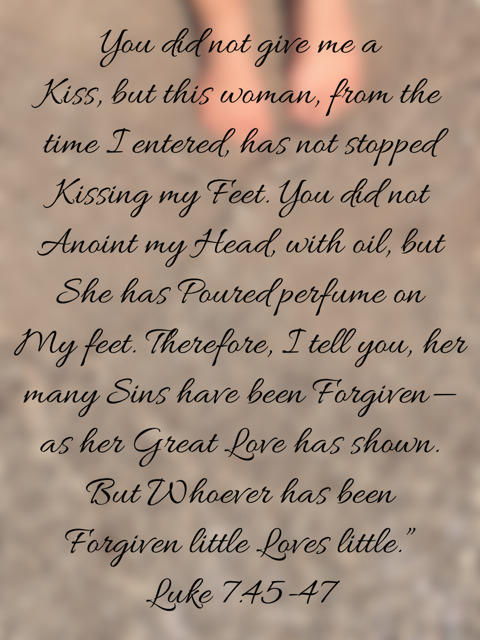
View On WordPress
#DoNotGiveUpHealthyLivingWithOilyBlessings YoungLivingGoals ChestnutRidgeBaptistChurch  DoNotGiveUpInWellDoing DoNotGiveUp AlwaysHop#EnergyAtAnyAge YoungLivingNingXiaRedDoNotGiveUpHealthyLivingWithOilyBlessings YoungLivingGoals DoNotGiveUpInWellDoing DoNotGiveUp Al#Frankincense#GodAnswersPrayers#God‘sPlanOrMyPlan#HealthyLivingBodyMindAndSoul HealthyLivingWithOilyBlessings HealthyLivingWithHope SharingHopeAndHealthyBodyMindAndSoulOneDropAtATime#HealthyLivingBodyMindAndSoul HealthyLivingWithOilyBlessings HealthyLivingWithHope SharingHopeAndHealthyLivingBodyMindAndSoulOneDropAtATi#HealthyLivingClasses HealthyLivingWithOilyBlessingsClasses YoungLivingNewCareer MomsWorthAMillionDollars Energy#Hope Miracles#HopeForTheHurting#HopeRestored StrengthRestored IsThereAnyHope HowCanIRedoMyStrength#HopeThroughTheStorm#NeedPrayer AlwaysHope#SharingHopeAndHealthyLiving#Stamina WellBeingHope Envision a LifeOfWellness. ValorForStrength MotivationToKeepGoing HighestPotentialToReachHerGoals AcceptanceT#Thieves Hope Immupro Oregano Melissa DiGize Peppermint Raven RC#Valerian Spikenard AncientOilsOfTheBible#ValorForStrength PeaceAndCalming StressAway BeAnxiousForNothingButInEverythingPray#ValorForStrength PeaceAndCalming StressAway BeAnxiousForNothingButInEverythingPray SharingHopeAndHealthyLiving#YoungLivingEssentialOilHope#https://sharinghopeandhealthyliving.com NeverGiveUp#https://yl.pe/b7vqhttps://www.myyl.com/healthylivingwithoilyblessingshttps://www.myyl.com/healthylivingwithoilyblessingsewm/hope https://ww
0 notes
Text
Countenance
No shade to FKA Twigs, but Wendi Wyatt is the actual factual weeping voice of MARY MAGDALENE
youtube
0 notes
Text
Discover Serenity: Meena Perfumery's Pure Spikenard Oil
Explore the tranquility of antiquity with Meena Perfumery, as it has a rare and refined essence sourced from pristine valleys, known as Spikenard oil. This oil has been used as a perfume, and it has medicinal uses like skin care. Its warm nature also helps with heavy menstrual periods, vaginal discharge, and kidney and liver problems. It also helps with all kinds of inflammation and disperses accumulated toxins. Meticulously crafted for purity, this essential oil offers a serene escape from the daily hustle. Its antifungal properties are also good for Candida infections. Immerse yourself in the natural, musky aroma of Spikenard Oil, which promotes relaxation and calmness.
0 notes
Text
Could I have an allergic reaction after using Essential oils?

Introduction
Essential oils have become extremely popular in recent years due to their numerous medicinal and aromatic characteristics. These natural compounds from plants, flowers, and fruits have been utilized in conventional medicine and aromatherapy for generations. While essential oils are generally regarded safe when used correctly, allergic reactions are possible. In this post, we will look at the dangers of allergic responses to essential oils and how to utilize them properly to reduce the possibility of side effects.
Essential Oils Explained
Essential oils are extremely concentrated liquids taken from plants' leaves, blossoms, bark, stems, and roots. Extraction processes can vary, including steam distillation, cold pressing, and solvent extraction. These oils contain the natural compounds responsible for the plant's fragrance and other therapeutic properties.
Allergic Reactions to Essential Oils
While essential oils are generally safe, they are potent substances that can lead to allergic reactions in some individuals. An allergic reaction occurs when the body's immune system identifies a specific component in the essential oil as a foreign invader and responds by releasing chemicals like histamine. This can result in a range of symptoms, including:
Skin Irritation: Contact dermatitis is one of the most common allergic reactions to essential oils. It might cause redness, irritation, or a rash on the skin where the oil was administered. This might happen anywhere between minutes and hours after application.
Respiratory Symptoms: Inhaling essential oil vapors or using a diffuser may trigger respiratory allergies, leading to symptoms like coughing, sneezing, wheezing, and nasal congestion.
Eye Irritation: Some essential oils can irritate the eyes, causing redness, itching, or watery eyes.
Gastrointestinal Distress: Ingesting essential oils, which is not recommended without expert guidance, can lead to nausea, vomiting, or digestive discomfort.
Systemic Reactions: In rare cases, exposure to certain essential oils can lead to systemic allergic reactions, causing symptoms like hives, swelling, and anaphylaxis.
Common Essential Oils Known to Cause Allergic Reactions
While allergic reactions to essential oils can occur with any oil, some oils are more likely to trigger sensitivities due to their chemical composition. It's essential to be cautious when using the following essential oils:
Citrus Oils: Oils like lemon, orange, and bergamot contain compounds that can increase sensitivity to sunlight, potentially causing skin reactions.
Lavender Oil: Despite its popularity, lavender oil may cause skin sensitivity in some people.
Eucalyptus Oil: Although eucalyptus oil is known for its respiratory advantages, it might cause respiratory allergies in certain people.
Tea Tree Oil: This oil is used for its antiseptic properties but can also cause skin irritation or allergic reactions in sensitive individuals.
Cinnamon Oil: Cinnamon oil is potent and can lead to skin irritation or allergies, especially when used in high concentrations.
Avoiding Allergic Reactions
To reduce the risk of allergic reactions when using essential oils, follow these guidelines:
Patch Test: Before utilizing a new essential oil, do a patch test by applying a diluted solution to a small area of skin. Wait 24 hours to check if there are any bad responses.
Dilution: Always dilute essential oils with a carrier oil (such as coconut oil or jojoba oil) before applying them to the skin. A normal dilution ratio of essential oil to carrier oil is 1-2%.
Quality is Important: Choose high-quality, pure essential oils from trustworthy providers to eliminate the possibility of synthetic additions or impurities that might cause allergic responses.
Personal Sensitivity: Be aware of your own sensitivities and allergies. If you have a history of allergies or skin sensitivities, use essential oils with care.
A qualified aromatherapist or other healthcare provider should always be consulted before taking essential oils.
Consult an Expert: If you have concerns or are unsure about using a particular essential oil, consult with an aromatherapist or healthcare provider.
Conclusion
Essential oils provide a natural and holistic solution to a variety of health and wellbeing issues. However, it is essential to be aware of the possible hazards of allergic responses that may occur as a result of their usage. While these reactions are relatively rare, understanding how to use essential oils safely and responsibly is key to enjoying their benefits without complications. By following proper dilution methods, performing patch tests, and being mindful of personal sensitivities, you can incorporate essential oils into your daily routine with confidence and peace of mind.
#Essential Oils Manufacturer#Natural Essential Oils Wholesale#Certified Organic Essential Oils Wholesale#Bulk Organic Essential Oils#Floral Absolute Oils Supplier#Hydrosol Wholesale#Hydrosol Bulk Supplier#Certified Organic Oils Manufacturer#Buy Spice Oils Online#Bulk Carrier Oils#Organic Carrier Oils Manufacturer#Oleoresin Supplier India#Spikenard Floral Water India#Saffron Floral Water Manufacturer#Saffron Floral Water Supplier#Neroli Floral Water Manufacturer#Neroli Floral Water Supplier#Neroli Floral Water India#Naagchampa Floral Water Supplier#Naagchampa Floral Water#Helichrysum Floral Water Manufacturer#Geranium Floral Water Manufacturer#Cardamom Floral Water Supplier#Frankincense Hydrosol#Orange Blossom Hydrosols Manufacturer#Mellisa Hydrosol Manufacturer#Mellisa Hydrosol Supplier#Lemon Hydrosol Manufacturers#Lavender Hydrosol Manufacturer#Lavender Hydrosol Supplier
0 notes
Text
Spikenard plant tea- health benefits, uses, and more
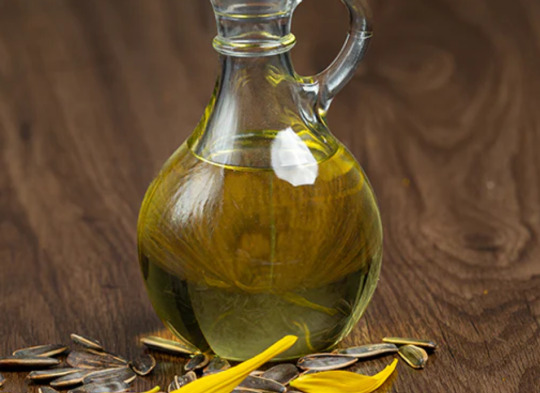
Spikenard plant tea- health benefits, uses, and more
There are various herbs on this planet, and each one of them has its own set of uses. Most of them are into use since prehistoric times, mainly in countries like India and some parts of the middle east. The only reason for this is that they are only grown in these places, and people here are focused on natural herbal ways rather than normal ones. And one such natural herb with numerous health benefits is the Spikenard plant. For ages, Spikenard has been in use for religious, beauty, and other health purposes. It is used as a main ingredient in tea, oil, and in other beauty products too.
What is spikenard essential oil?
Spikenard essential oil is just like lavender oil mostly used for its cosmetic benefits. It belongs to the class of aromatic amber-colored oils extracted from the plant named Jatamansi. It is known to have anti-inflammatory and anti-bacterial properties. It gets an earthy and musky scent and is available as a highly prized perfume. It is mostly grown in the Himalayan region of Nepal, India, and China.
Spikenard essential oil benefits
Here are spikenard essential oil benefits:
1. Soothes pain
Spikenard is anti-inflammatory in nature, and it helps soothe pain. It is applied externally in Ayurveda to treat arthritis, joint pain, and migraine, and it is also used to relieve pain too.
2. Anti-depressant
Spikenard when consumed and its aroma has calming effects on us. It is used as an anti-depressant, it reduces stress, and anxiety thereby reducing depression too.
3. Improves sleep quality
As mentioned above, Spikenard’s aroma helps in calming your brain down and improves moods, and improves overall sleep quality.
4. Improves brain functioning
Spikenard is also shown to have positive effects on the brain. It helps to reduce stress, reduce anxiety, calm your brain, and improve brain functioning too.
Read More: https://breweda.com/blogs/news/spikenard-plant-tea-health-benefits-uses-and-more
0 notes
Text
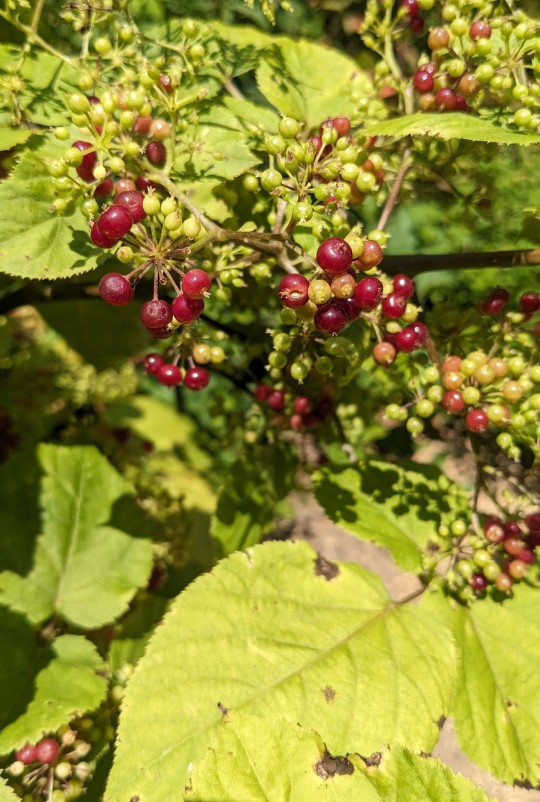
Aralia racemosa / American Spikenard at the North Carolina Botanical Gardens at the University of North Carolina at Chapel Hill in Chapel Hill, NC
#Aralia racemosa#Aralia#American Spikenard#Small Spikenard#Indian root#Spice berry#Spignet#Life-of-man#Petty morel#Edible plants#Native plants#Nature photography#photographers on tumblr#Berries#North Carolina Botanical Gardens#UNC#UNC-Chapel Hill#Chapel hill#Chapel hill NC#North Carolina#Spikenard
0 notes
Text






look for the name SAINT (requested by anonymous) | ann demeulemeester loose white dress (s/s 1997), { hair } audrey marnay @ tse a/w 1999, zoran light brown soft leather sandals, alkemia "gothique" perfume ("a byzantine monastic incense recipe of somalian frankincense, styrax benzoin, arabian myrrh, cassia, spikenard, canella, liquidambar orientalis, labdanum, atlas cedar, and vetiver."), lamagdala (on etsy) "our lady of kevelaer crowned by angels" genuine gray druzy agate choker necklace (featuring german inscription: "O Mary Conceaved Without Sin Pray For Us Who Have Recourse To Thee.") (medal c. 18oo's)
#saint#name#request#outfit#neutrals#hope you like !#brown#white#ann demeulemeester#hair#audrey marnay#tse#zoran#flats#sandals#footwear#leather#alkemia#perfume#edp#monastic#lamagdala#etsy#necklace#jewellry#agate#iconography#queue
113 notes
·
View notes
Text

Sydney Joseph (1876-1950), 'Spikenard and Saffron', ''Vanity Fair'', November 1919
137 notes
·
View notes
Text
February 2024 witch guide
Full moon: February 24th
New moon: February 9th
Sabbats: Imbolc-February 1st
February Snow Moon
Known as: Eagle Moon, Horning Moon, Solmonath Moon, Bear moon, Ice Moon, Wild Moon, Raccoon Moon, Big Winter Moon, Groundhog Moon, Quickening Moon, Storm Moon, Goose Moon, Hungry Moon & Red/Cleansing Moon
Element: Fire
Zodiac: Aquarius & Pisces
Nature spirits: House Faeries
Deities: Aphrodite, Brigid & Nut
Animals: Otter & Unicorn
Birds: Chickadee & Eagle
Trees: Cedar, laurel, myrtle & rowan
Herbs: Balm of Gilead, hyssop, myrrh, sage & spikenard
Flowers: Primrose
Scents: Heliotrope & wisteria
Stones: Amethyst, jasper, moonstone, obsidian, onyx , rose quartz, topaz & red zircon
Colors: Light blue & violet
Energy: Astral travel, banishing, beginnings, breaking bad habits, creativity expressiveness, empowerment, energy working to the surface, fertility, forgiveness, freedom, friendships, future plans, growth, healing, problem solving, purification, responsibility & science
February’s full Moon is a “Micromoon” this year. Think of this term as the opposite of a “Supermoon.” It simply means that the full Moon is at its farthest point from Earth (not the nearest point).
The explanation behind February’s full Moon name is a fairly straightforward one: it’s known as the Snow Moon due to the typically heavy snowfall that occurs in February. On average, February is the United States’ snowiest month, according to data from the National Weather Service. In the 1760s, Captain Jonathan Carver, who had visited with the Naudowessie(Dakota), wrote that the name used for this period was the Snow Moon, “because more snow commonly falls during this month than any other in the winter.”
Imbolc
Known as: Feast of Torches, Feast of Waxing Light, Oimele & Brigid's Day
Season: Winter
Symbols: Besoms, Brighid's crosses, candles, candle wheels, fertility symbols, fire, ploughs, priapic wands & white flowers
Colors: Black, brown, Earth tones, lavender, light green, orange, pink, red, white & yellow
Oils/Incense: Apricot, basil, bay, carnation, chamomile, cinnamon, dragon's blood, frankincense, heather, jasmine, myrrh, neroli, red sandalwood, sage, vanilla, violet & wisteria
Animals: Badger, cow, deer,groudhog, robin, sheep, snake, & swan
Mythical: Dragon
Stones: Amethyst, bloodstone, citrine, clear quartz, garnet, green tourmaline, hematite, iron, lodestone, onyx, red zircon, rose quartz, ruby, turquoise, yellow tourmaline
Food: Breads, chives, curries, dairy products, grains, garlic, herbal teas, honey cakes, lamb, muffins, onions, peppers, poppy seed cakes, pork, poultry, pumpkin seeds, raisins, scones, spiced wines & sunflower seeeds
Herbs/Plants: Angelica, ashleaf, balsam, basil, bay laurel, benzoin, blackberry, clover, coltsfoot, coriander, dragon's blood, garlic, heather, lemon, myrrh, rosemary, sage, vervain, wheat & witch hazel
Flowers: Celandine, chamomile, iris, rose hips, snowdrop, sunflower, tansy, violets, white flowers & yellow flowers
Goddesses: Anu, Aradia, Arianrhod, Artio, Athena, Branwen, Brigid, Danu, Februa, Gaia, Inanna, Juno, Selene, Sirona & Vesta
Gods: Aegus Mac Og, Bragi, Cupid, Dian Cecht, Dumuzi, Eros, Februus & Pax
Issues, Intentions & Powers: Activation/awakening, animals, beginnings, fertility, healing, hope, illumination, inspiration, light, pregnancy/childbirth, prophecy, transformation, well-being & youth
Spellwork: Air magick, banishings, candle spells, divination, fertility spells, prosperity & purification
Activities:
• Make & light white candles
• Clean/decorate your altar & consecrate your altar tools
• Go on a walk in nature & look for signs of spring
• Make a Brigid's Cross
• Have a feast with your family/friends
• Give thanks & leave offerings to the Earth
• Set intentions, reflect & look deeper into your goals for spring
• Start a bonfire
• Find Imboloc prayers & devotionals that bid farewell to the winter months, honor the goddess Brigid, as well as seasonal blessings for your meals, hearth, & home.
• Pepare plans for your upcoming garden
• Craft a priapic wand
• Spend time with children celebrating Imbolc by making crafts & or baking
• Practice divination & fire scrying
• Draw a cleansing ritual bath for yourself
• Meditate, reflect & say your farewells to winter
• Cleanse & clean your house to prepare for spring
• Create a Brídeóg: a doll of Brigid made of straw
• Make Bride's bouquet satchets & exchange as symbols of good luck and fertility
• Set aside food & or drinks as an offering to Brigid to invite her in your home
Imbolc is a Gaelic festival marking the beginning of spring. Most commonly it is held on January 31 – February 1, or halfway between the winter solstice & the spring equinox. The holiday is a festival of the hearth, home, a celebration of the lengthening days & the early signs of spring.
The word "imbolc" means "in the belly" and refers to the pregnancy of ewes at this time of year. The term "oimelc" means ewe's milk. Around this time of year, many herd animals give birth to their first offspring of the year or are heavily pregnant & as a result, they are producing milk. This creation of life’s milk is a part of the symbolic hope for spring.
Imbolc is mentioned in some of the earliest Irish literature and it is associated with important events in Irish mythology. It has been suggested that it was originally a pagan festival associated with the goddess Brigid and that it was Christianized as a festival of Saint Brigid, who herself is thought to be a Christianization of the goddess.
Some use Imbolc to celebrate the longer days which herald the return of Spring & The Goddess's recovery from giving birth to The Sun (The God) at Yule. The God & The Goddess are children symbolizing new life, new beginnings & new resurrections.
Related festivals:
• Groundhog Day- Is a tradition observed in the United States & Canada on February 2 of every year. It derives from the Pennsylvania Dutch superstition that if a groundhog emerges from its burrow on this day & sees its shadow, it will retreat to its den & winter will go on for six more weeks; if it does not see its shadow, spring will arrive early.
While the tradition remains popular in the 21st century, studies have found no consistent association between a groundhog seeing its shadow & the subsequent arrival time of spring-like weather.
•St. Brigid's Day- 1 February. It was originally Imbolc, the first day of spring in Irish tradition. Because Saint Brigid has been theorised as linked to the goddess Brigid, some associate the festival of Imbolc with the goddess. St. Brigid is the patroness saint (or 'mother saint') of Ireland. She is patroness of many things, including poetry, learning, healing, protection, blacksmithing, livestock & dairy production. In her honour, a perpetual fire was kept burning at Kildare for centuries.
A recent campaign successfully established her feast day as a national holiday in 2023.
• Chinese New Year- (February 10th) the festival that celebrates the beginning of a new year on the traditional lunisolar Chinese calendar. In Chinese, the festival is commonly referred to as the Spring Festival,- marking the end of winter and the beginning of the spring season. Observances traditionally take place from Chinese New Year's Eve, the evening preceding the first day of the year, to the Lantern Festival, held on the 15th day of the year. The first day of Chinese New Year begins on the new moon that appears between January 21st & February 20th.
The Chinese New Year is associated with several myths and customs. The festival was traditionally a time to honour deities as well as ancestors. Within China, regional customs and traditions concerning the celebration of the New Year vary widely & the evening preceding the New Year's Day is frequently regarded as an occasion for Chinese families to gather for the annual reunion dinner.
It is also a tradition for every family to thoroughly clean their house, in order to sweep away any ill fortune & to make way for incoming good luck. Another custom is the decoration of windows & doors with red paper-cuts and couplets. Popular themes among these paper-cuts and couplets include good fortune or happiness, wealth & longevity. Other activities include lighting firecrackers & giving money in red envelopes.
• Candlemas- is a Christian feast day on February 2nd commemorating the presentation of Jesus at the Temple. It is based upon the account of the presentation of Jesus in Luke 2:22-40.
While it is customary for Christians in some countries to remove their Christmas decorations on Twelfth Night, those in other Christian countries historically remove them after Candlemas.On Candlemas, many Christians also take their candles to their local church, where they are blessed and then used for the rest of the year.
•Setsubun- (February 3rd) Is the day before the beginning of spring in the old calendar in Japan. The name literally means 'seasonal division', referring to the day just before the first day of spring.
Both Setsubun & Risshun are celebrated yearly as part of the Spring Festival (Haru matsuri ) in Japan. In its association with the Lunar New Year, Setsubun, though not the official New Year, was thought of as similar in its ritual & cultural associations of 'cleansing' the previous year as the beginning of the new season of spring. Setsubun was accompanied by a number of rituals & traditions held at various levels to drive away the previous year's bad fortunes & evil spirits for the year to come.
Other Celebrations:
• Lupercalia-
In ancient Rome, this festival was conducted annually on February 13th through 15th under the superintendence of a corporation of priests called Luperci. The origins of the festival are obscure, although the likely derivation of its name from lupus (Latin: “wolf”) has variously suggested connection with an ancient deity who protected herds from wolves and with the legendary she-wolf who nursed Romulus and Remus. As a fertility rite, the festival is also associated with the god Faunus.
to purify the city, promoting health & fertility.
Each Lupercalia began with the sacrifice by the Luperci of goats and a dog, after which two of the Luperci were led to the altar, their foreheads were touched with a bloody knife & the blood was wiped off with wool dipped in milk; the ritual required that the two young men laugh. The sacrificial feast followed, after which the Luperci cut thongs from the skins of the sacrificial animals & ran in two bands around the Palatine hill, striking with the thongs at any woman who came near them. A blow from the thong was supposed to render a woman fertile.
In 494 CE the Christian church under Pope Gelasius I forbade participation in the festival. Tradition holds that he appropriated the form of the rite as the Feast of the Purification (Candlemas), celebrated on February 2, but it is likely that the Christian feast was established in the previous century. It has also been alternately suggested that Pope Gelasius I replaced Lupercalia with St. Valentine’s Day, celebrated on February 14th, but the origin of that holiday was likely much later.
Sources:
Farmersalmanac .com
Llewellyn's Complete Book of Correspondences by Sandra Kines
Wikipedia
A Witch's Book of Correspondences by Viktorija Briggs
Encyclopedia britannica
Llewellyn 2024 magical almanac Practical magic for everyday living
#witchblr#wiccablr#paganblr#witchcraft#witch guide#February 2024#snow moon#Imbolc#witch community#witches of tumblr#tumblr witches#correspondences#grimoire#book of shadows#spellbook#traditional witchcraft#spellwork#witch tips#witch tumblr#beginner witch#baby witch#witchcore#Lupercalia#full moon#moon magic#GreenWitchcrafts#pagan#wicca#witch#witchy things
301 notes
·
View notes